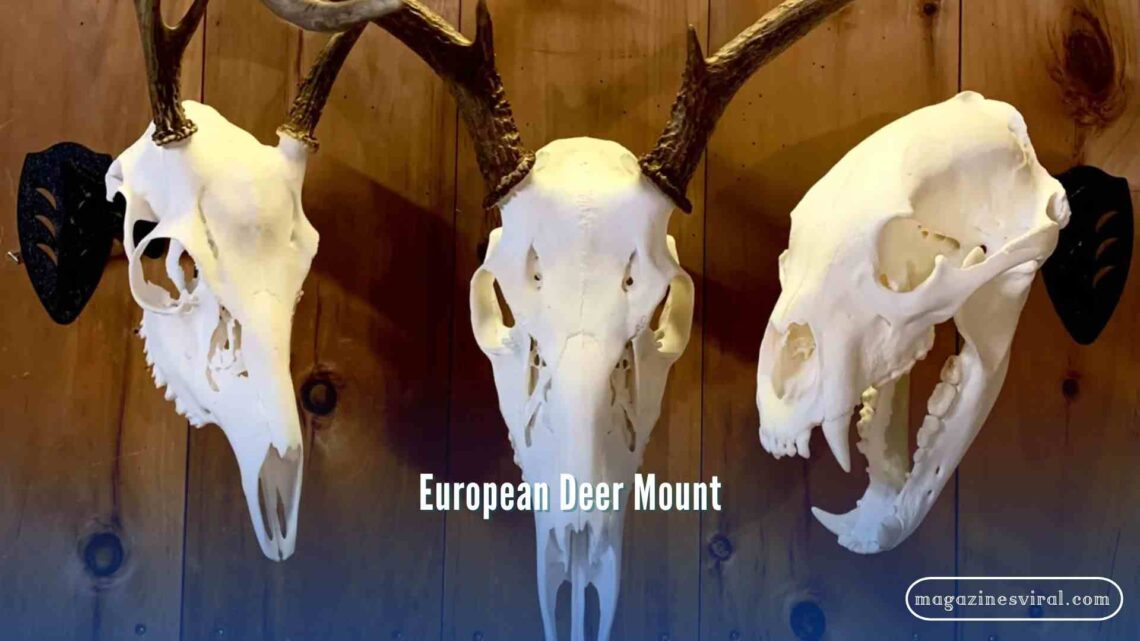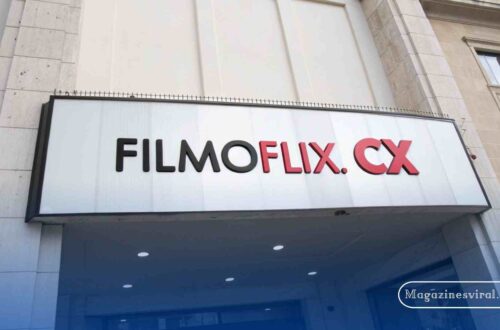A European deer mount is a cleaned and whitened deer skull with antlers still attached. It is a simple affordable way to show off a hunting trophy and looks great on any wall.
Stay tuned with us — next we’ll talk about how to create your own European deer mount step-by-step and tips to make it look amazing!
What Is a European Deer Mount? A Closer Look
A European deer mount (also called a skull mount) preserves the deer’s cleaned and whitened skull with the antlers still attached. Unlike a traditional shoulder mount—which includes the head, neck and sometimes parts of the hide—this method removes all soft tissue, leaving the bare bones.
Historical Roots of the European Mount
The European mount originated in Europe centuries ago as a practical and decorative way to commemorate hunting trophies. Hunters would clean and whiten skulls to display as proof of skill, often mounted above hearths or on hunting lodges.
Today the style remains popular worldwide due to its minimalist charm and affordability.
The Advantages of a European Deer Mount
Why do many hunters and decorators prefer European mounts? Here are some key benefits:
- Cost-effective: No tanning or preserving of skin needed.
- Lightweight: Easier to transport and hang on walls.
- Unique aesthetic: Shows off the antlers and bone structure in a clean, artistic way.
- Durability: With proper care, skull mounts last for decades.
- DIY Friendly: Offers a rewarding hands-on experience.
- Eco-conscious: Uses less material and chemicals compared to full mounts.
Step-by-Step Process: How to Create a European Deer Mount

If you want to create your own European mount or understand how professionals do it, here’s a detailed breakdown:
Field Preparation: Initial Skinning and Removal of Soft Tissues
Once the deer is harvested, remove the hide from the skull carefully. This includes detaching the skin from the head, removing eyes, tongue, and any remaining flesh. Be mindful to preserve the antlers and skull integrity.
Boiling vs. Maceration: Cleaning the Skull
There are two main approaches to flesh removal:
- Boiling: Place the skull in a large pot of simmering water with detergent or washing soda to loosen tissue. Avoid boiling rapidly, which can damage bone.
- Maceration: Submerge the skull in water at room temperature and allow bacteria to naturally decompose flesh over 1-3 weeks. This method preserves delicate bone structure better.
Removing the Brain and Other Tissue
After initial cleaning, carefully extract the brain matter by soaking and using tools such as brushes or small picks.
Whitening and Bleaching
Use hydrogen peroxide (usually 3% to 12% concentration) to whiten the skull. Avoid chlorine bleach since it weakens bones and can cause yellowing over time.
Drying and Sealing
Allow the skull to dry fully in a well-ventilated area. Afterward, apply a sealant like a clear matte spray or polyurethane to protect and preserve the skull.
Variations of European Mounts: Beyond the Classic Skull
While the classic European mount is a skull and antlers on a plaque or hanger, many hunters and artists customize their mounts with unique touches.
Full Skull with Jawbone
Some mounts keep the jawbone attached for a more complete look, showing the full skeletal head.
Custom Plaques and Backboards
Plaques can be made from wood, stone, metal, or even resin. Some craftsmen carve personalized designs or engrave names, dates, and locations of the hunt.
Artistic or Rustic Finishes
- Burnt wood plaques add a smoky texture.
- Painted accents on antlers or plaque edges.
- Engraved metal plates for awards or dedication.
Mixed Media Displays
European mounts can be combined with other natural elements like feathers, moss, or dried flowers for a lodge-style vibe.
European Deer Mount vs. Traditional Shoulder Mount: Pros and Cons
| Feature | European Mount | Traditional Shoulder Mount |
| Price | Affordable ($100-$200) | Expensive ($300-$1,000+) |
| Size & Weight | Lightweight, compact | Bulky and heavy |
| Preparation Time | 1-3 weeks | 6-12 weeks |
| Maintenance | Low | Medium to high |
| Aesthetic | Minimalist & modern | Realistic & lifelike |
| Display Options | Wall, plaque, tabletop | Wall or pedestal |
| DIY Feasibility | High | Low |
Displaying Your European Deer Mount
One of the perks of European mounts is their versatility. Here are some ideas to make your mount a centerpiece:
Placement Tips
- Eye-level display on a living room or hallway wall ensures visibility.
- Above fireplaces or mantels for a classic lodge feel.
- Game rooms, offices, or dens to complement masculine or rustic themes.
- Cabins and hunting lodges — a natural fit that celebrates outdoor heritage.
Lighting and Accent Ideas
- Use spotlights or picture lights to highlight the skull’s contours.
- Surround with other hunting memorabilia like rifles, antlers, or vintage signs.
- Pair with natural wood furniture and earth tones to enhance warmth.
Cost Breakdown: What to Expect for a European Deer Mount?
Pricing depends on whether you DIY or use a professional, plus extras like custom plaques.
| Item | Estimated Cost |
| Skull cleaning (DIY supplies) | $20 – $50 |
| Professional cleaning/mounting | $100 – $250 |
| Custom wooden plaque | $50 – $150+ |
| Whitening supplies | $10 – $30 |
| Mounting hardware | $10 – $40 |
Pro tip: If you’re hunting in different regions or countries, prices may vary due to local labor and material costs.
Legal Considerations and Ethical Hunting Practices
Before you start mounting any trophy, ensure:
- Your deer was harvested legally under local game laws and seasons.
- You have the proper permits if transporting skulls across state or country borders.
- You respect ethical hunting standards, including fair chase and conservation principles.
Consult your state’s wildlife agency or local taxidermist for regulations.
Caring for Your European Deer Mount: Long-Term Tips
To keep your mount looking pristine:
- Dust weekly with a soft brush or microfiber cloth.
- Avoid prolonged exposure to direct sunlight to prevent bone discoloration.
- Keep away from high humidity or moisture which can cause mold or deterioration.
- Reapply a protective sealant every few years.
- Handle with care when moving to prevent antler damage.
European Mounts for Other Game Animals
The European mounting style isn’t limited to deer. Hunters commonly use it for:
- Elk
- Moose
- Antelope
- Wild boar
- Mountain goats
- Predators like wolves or coyotes (skull-only mounts)
This versatility adds to its appeal for various types of hunting trophies.
FAQ’s
1. Can European mounts be made from shed antlers alone without the skull?
Yes, shed antlers can be mounted individually using plaques or frames, but it’s not considered a true European mount since that requires the skull attached.
2. How long does the entire European mounting process take from start to finish?
Typically, the full process takes between 2 to 6 weeks, depending on the cleaning method (boiling vs. maceration) and drying time.
3. Are European mounts suitable for all deer species, including exotic or non-native ones?
Absolutely! European mounts work well for all species with antlers or horns, including exotic deer, elk, and even some antelope.
4. What are the common mistakes to avoid when making a DIY European deer mount?
Common errors include using bleach instead of peroxide, boiling too vigorously which damages bone, and failing to remove all tissue thoroughly leading to odor and decay.
5. Can European mounts be customized with engraving or other personalization techniques?
Yes, many taxidermists or hobbyists add engraved nameplates, hunting dates, or decorative carving on plaques to personalize the mount.
Conclusion:
A European deer mount is a beautiful simple way to show off your hunting trophy. It is affordable, long-lasting and fits well in any home. Whether you make it yourself or use a professional it is a special keepsake that honors your hunting success and nature’s beauty.





